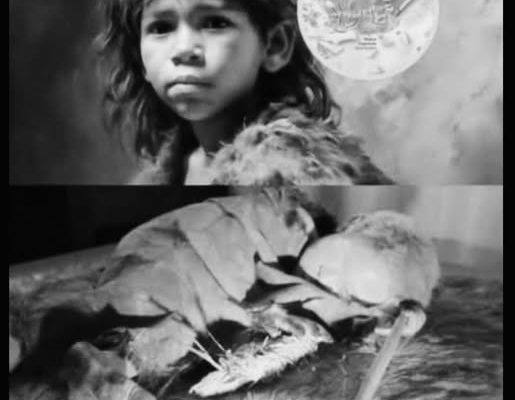Just a few weeks ago, a groundbreaking new study confirmed what for decades was an uncomfortable suspicion among archaeologists: the Child of Lapedo, whose remains were found in 1998 in a Portuguese cave, is much more than an infant fossil. Thanks to state-of-the-art molecular dating techniques, scientists have been able to accurately establish that this child lived between 27,800 and 28,500 years ago. But that’s not the most surprising thing. What has left the scientific community breathless is that this little guy was neither a pure Homo sapiens, nor a Neanderthal. It was a hybrid. A child born from the union of two different human species. And that changes everything.
Until recently, most experts believed that Neanderthals had gone extinct about 40,000 years ago, leaving no direct descendants. However, this new analysis not only confirms that they continued to exist thousands of years after their supposed disappearance, but they continued to intersect with modern Homo sapiens. The Child of Lapedo had a robust jaw and short legs, characteristics typical of Neanderthals, but also a more spherical skull and a well-defined chin, like modern humans. These mixed traits can’t be explained by chance: they’re the physical trace of a genetic hybrid.
And there are still more. The context in which his body was found demonstrates that our ancestors not only shared space with Neanderthals, but also spiritual beliefs. The child was carefully buried, covered in red ochre, accompanied by animal bones and feathers, in what appears to have been a symbolic funeral ritual. This practice was not common among the Homo sapiens of southern Europe at the time, but it was among Neanderthals. Does this mean we also inherit their beliefs, their customs, their way of understanding life and death?
This discovery, confirmed in March 2025 by several European research teams, is not just a curious fact. It is overwhelming proof that the modern human being is not the product of linear evolution, but the result of a complex blend of species that shared territories, blood, and culture. The implications are huge: if Neanderthals didn’t disappear as believed, but integrated into our populations, then part of their legacy lives on in us, in our DNA, in our deepest emotions, even in our rituals and our way of loving, fearing or remembering.
The most disturbing thing of all is to think that for years, centuries even, official history has hidden this possibility from us. It was taught in schools and universities that Neanderthals were an inferior species, doomed to extinction against the alleged superiority of Homo sapiens. Today, however, genetic data reveals that all non-African humans carry at least 2% Neanderthal DNA. In other words, we’re more of them than we’d like to admit. And perhaps, if we dig a little into our deeper roots, we’ll understand that what we call humanity is actually a fusion, an intertwining of lives, cultures, and mysteries yet to be discovered.
If these kinds of findings keep coming to light, we’ll have to rewrite much of the history books. The Child of Lapedo is not an isolated case. It’s the tip of a genetic and cultural iceberg that we’re just beginning to explore. What else does the past hide from us? What other uncomfortable truths are about to emerge from the earth? Science never stops advancing, and every discovery brings us, ironically, closer to our wildest and unknown origins. But above all, it reminds us that human history is not that of a single dominant species, but that of an encounter: one that still echoes, with strength, in our own bodies.

